East Asian: China and Japan Study Guide 3
1/83
There's no tags or description
Looks like no tags are added yet.
Name | Mastery | Learn | Test | Matching | Spaced |
|---|
No study sessions yet.
84 Terms
prehistoric, domestication of agriculture
hard, typically green materials
flat perforated diskmade of nephrite, looks like a flat donut
hollowed, square tubes
celestial aspect of the cosmos associated with the bi
composite animal mask
humanity’s relationship with the natural world, cultivate wisdom, intuitive awareness, harmony
where humans fit into society, perfect behavior = perfect society, adherence to traditional social relationships
separate mold pieces put together for a 3d object, making impressions from the first clay model, then filling the mold with bronze
liquid substance, varnish, water-resistant, typically used on wood
expressive hand lettering, six scripts, kinetic motion portrayed
a format of East Asian painting that is bigger in length than height
covered in gold leaf
a halo or frame that surrounds the entire body
goal is liberation of all beings
Japanese indigenous region
spirits of natural forces, landscape elements, or revered ancestors
the Shinto sun goddess and ancestor of Japanese imperial family
“stupa” structure of East Asia, holds relics of ruling family
“golden hall”, gathering area
trade routes across the Eastern hemisphere, trading materials as well as ideas
three-color ware
a liquid covering for an object
cosmic Buddha, transcends space and time
painting made directly on a wall’s surface
achieving rebirth in the “pure land”
the main Buddha of the pure land
author of the Tale of Genji, lady-in-waiting
blown-off roof in painting, Japanese perspective
Onna-e/Otoko-e
women’s/men’s painting, can represent different things depending on the gender of the audience
a format of East Asian painting that is typically taller, displayed temporarily and is rolled up to be stored
educated artists, pursued abstraction and self-expression
East Asian ethnic group, conquered Song Dynasty
smooth, translucent ceramic made from kaolin clay
an aesthetic sensibility promoted by the Literati; reserved in style, shuns visual excitement
period of relative stability, active trade, and artistic development during the Mongol rule
Japanese term for handscroll
achieve Enlightenment through meditation, realization is the result of coming to one’s own conclusion
Japanese dry landscape garden
Japanese pottery, typically used in tea ceremonies, literally means pleasure. Hand built, characterized by a lack of control, and tied to Zen Buddhism
a two-dimensional format where individual pages may be bound like a book
interpreting geography and environmental conditions to achieve harmony and balance
upward slope from each corner of the building
contact between cultures and/or those artworks that draw upon and integrate two or more distinct cultures
the diagonal parallel lines (visible or invisible) that recede from an object in the foreground or midground to a vanishing point on the horizon line
a format of Japanese painting taking the form of flat or folding screens, often paired
method of painting on wet ink that creates effects seen here
literally “pictures of the floating world”; refers to paintings and especially woodblock prints that take as their subject matter the pleasures and sites of Edo Japan
create a relief on a block, transfer pigments onto raised portions, several woodblocks needed
objects and images characterized by European taste and ideas about Japan, associated with 19th century Europe.
Flame vessels, from Sasayama, Niigata prefecture, Japan, Middle Jōmon period, c. 2500 BCE, terra-cotta, largest vessel 8 3/8” high
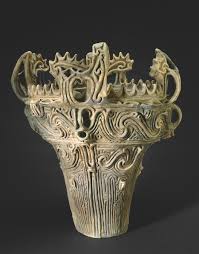
Cong (tube), Neolithic period, Liangzhu culture, c. 3500-2000 BCE, jade (nephrite), height 3 ½ “
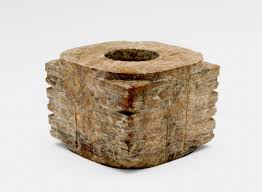
Fang ding with taotie design, from the tomb of Fu Hao, Anyang, Henan, China, Shang dynasty, c. 1200 BCE or slightly earlier, bronze, height 16 5/8”
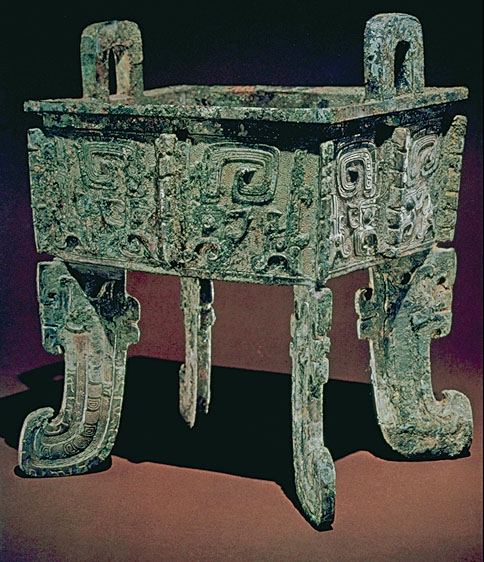
Racks of bells, from the tomb of the Marquis Yi of Zeng (died c. 433 BCE), Suixian, Hubei. Bronze and lacquered wood, length 24’ 6”, height 8’ 10”
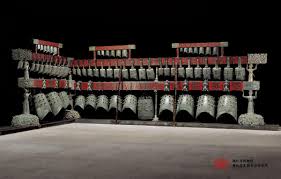
Army, tomb complex of the first Emperor of Qin, Pit 2, c. 210 BCE, terra-cotta, life-size figures
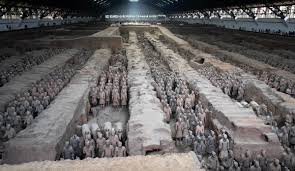
Haniwa warrior, from Iizuka-cho, Ota Ciy, Gunma Prefecture, Kofun period, sixth century, Earthenware, height 51 3/8”
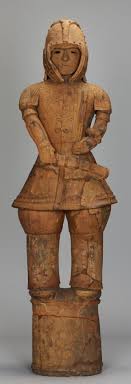
Funerary banner of the Lady of Dai, from Mawangdui Tomb 1, Changsha, Hunan province, China, early second century BCE, ink and color on silk
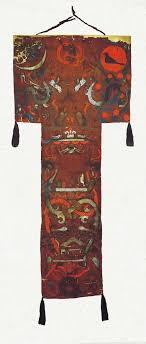
Admonitions of the Instructress to Court Ladies (detail), Tang dynasty copy of a fourth- or fifth-century handscroll painting by Gu Kaizhi, ink and color on silk, 9 ¼” x 11’6”
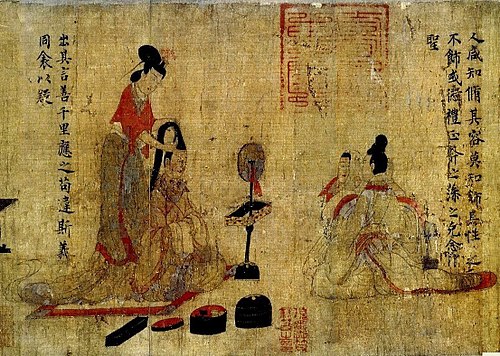
Gu Kaizhi
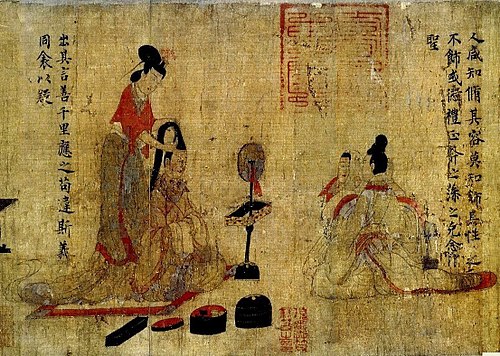
Seated Buddha, from Hebei province, China, later Zhao period (319-51), 338 CE, Gilt bronze, height 15 ¾” high
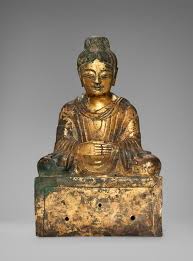
Colossal seated buddha, Yungang Caves (Cave 20), Shanxi province, China, northern Wei dynasty, c. 460-65, sandstone, height 45 ft. Hōryūji, Asuka period, seventh century, Nara prefecture, Japan
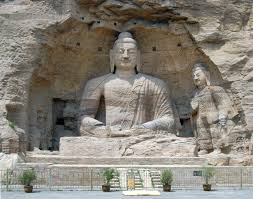
Camel Carrying Musicians, from the tomb of Xianyu Tinghui, Shaanxi province, China, dated 723, earthenware with three-color glaze, 26” high
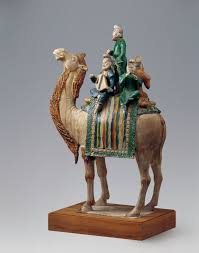
Colossal Vairochana and Attendants, Fengxian si (“Temple of Honoring Ancestors”), Cave 19, Longmen, Luoyang, Henan Province, China, Tang dynasty, 660-76, limestone, height of tallest figure 56’
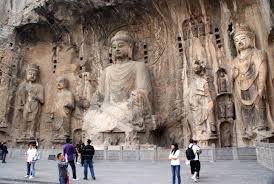
Amitabha Buddha Presiding over the Western Pure Land, Detail of mural on north wall of Cave 217, Mogao Cave Temples, Dunhuang, Tang dynasty, c. 713-66, Gansu province, China
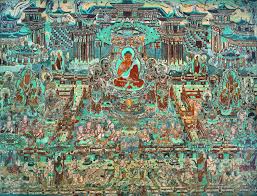
Illustration from the “Oak Tree (Kashigawi)” chapter from The Tale of Genji, late Heian period, Japan, twelfth century. Handscroll, ink and color on paper, height 8 5/8”
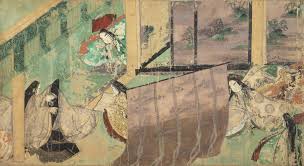
Murasaki Shikibu
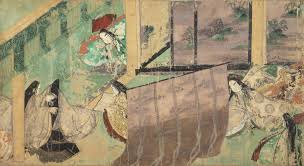
Fan Kuan, Travelers Among Mountains and Streams, Northern Song Dynasty, c. 1000, hanging scroll: ink and colors on silk
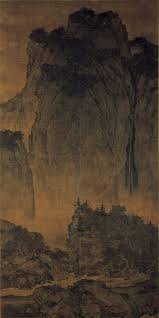
Fan Kuan
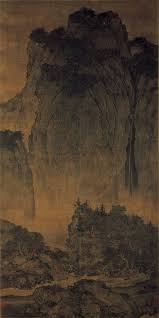
Altar vases (the David Vases), Yuan dynasty, 1351, porcelain with underglaze blue design,height 25 1/8”
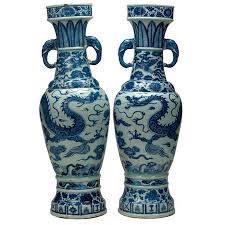
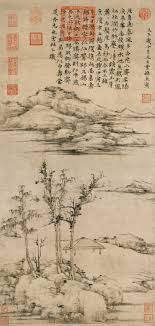
Ni Zan
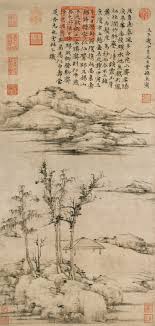
Night Attack on the Sanjō Palace (details), From the Illustrated Scrolls of the Events of the Heiji Era, Kamakura period, second half of the thirteenth century, Handscroll: ink and colors on paper, 16 ¼” x 22’ 11 ¾”
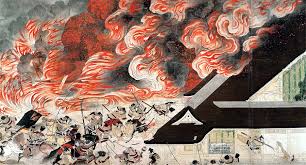
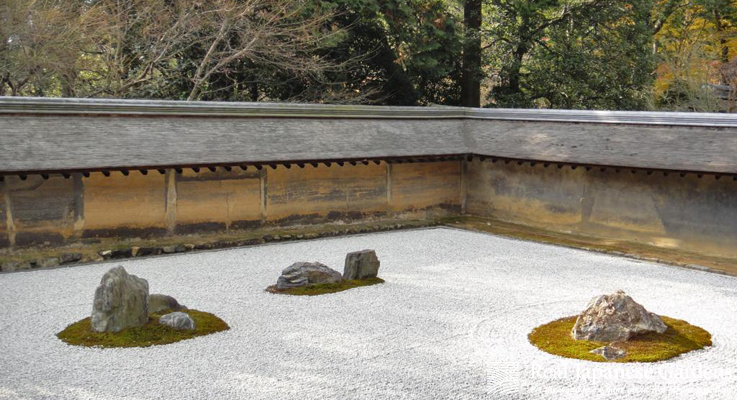
Dong Qichang, Landscapes after Old Masters, Ming dynasty, China, late 16th-early 17th century. Leaf from an album of eight leaves, ink on paper, 9 5/8” x 6 3/8”
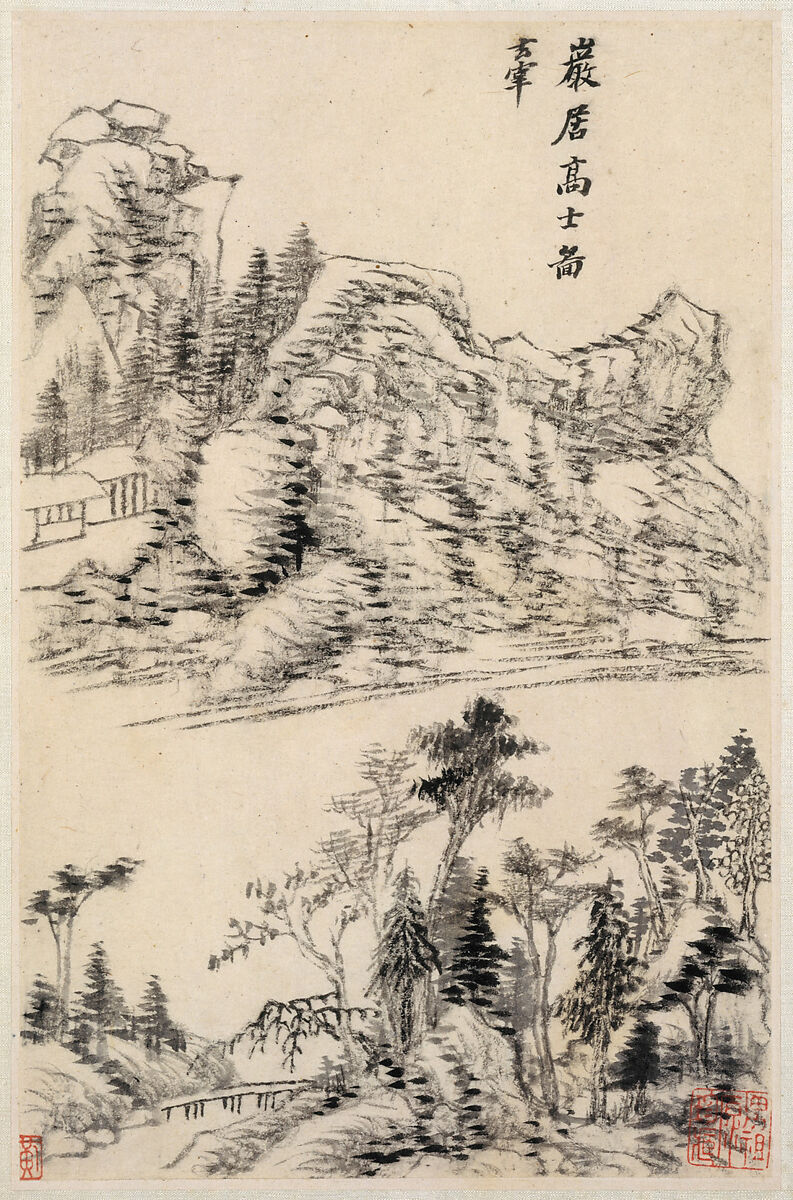
Dong Qichang


Giuseppe Castiglione (also known as Lang Shining), Imperial Visage of the Qianlong Emperor, Qing dynasty, 1736, Hanging Scroll, color on silk, 7’ 2 ½” x 6’
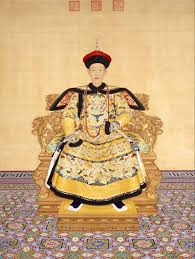
Giuseppe Castiglione
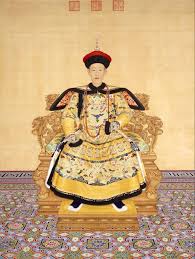
Ōgata Kōrin, Red and White Plum Blossoms, Edo period, c. 1710-16, Pair of two-panel folding screens, ink and colors, silver, and gold leaf on paper, each screen 5’ 1 5/8” x 5’ 7 7/8”
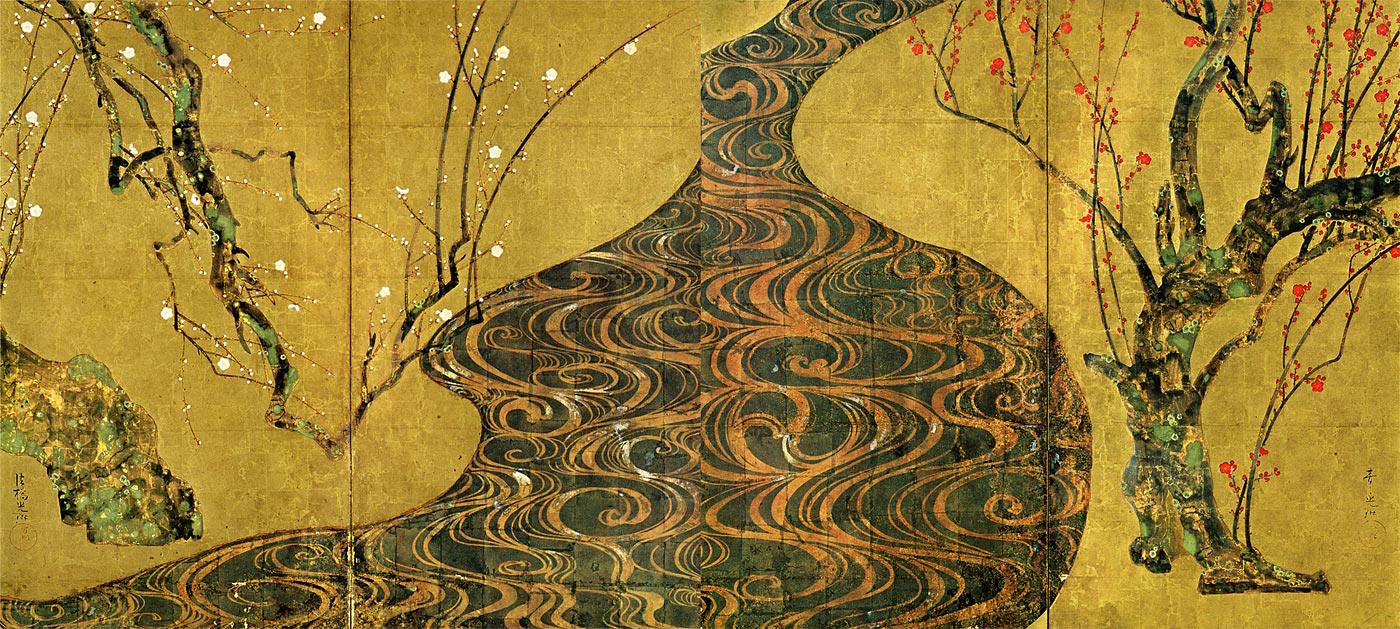
Ōgata Kōrin
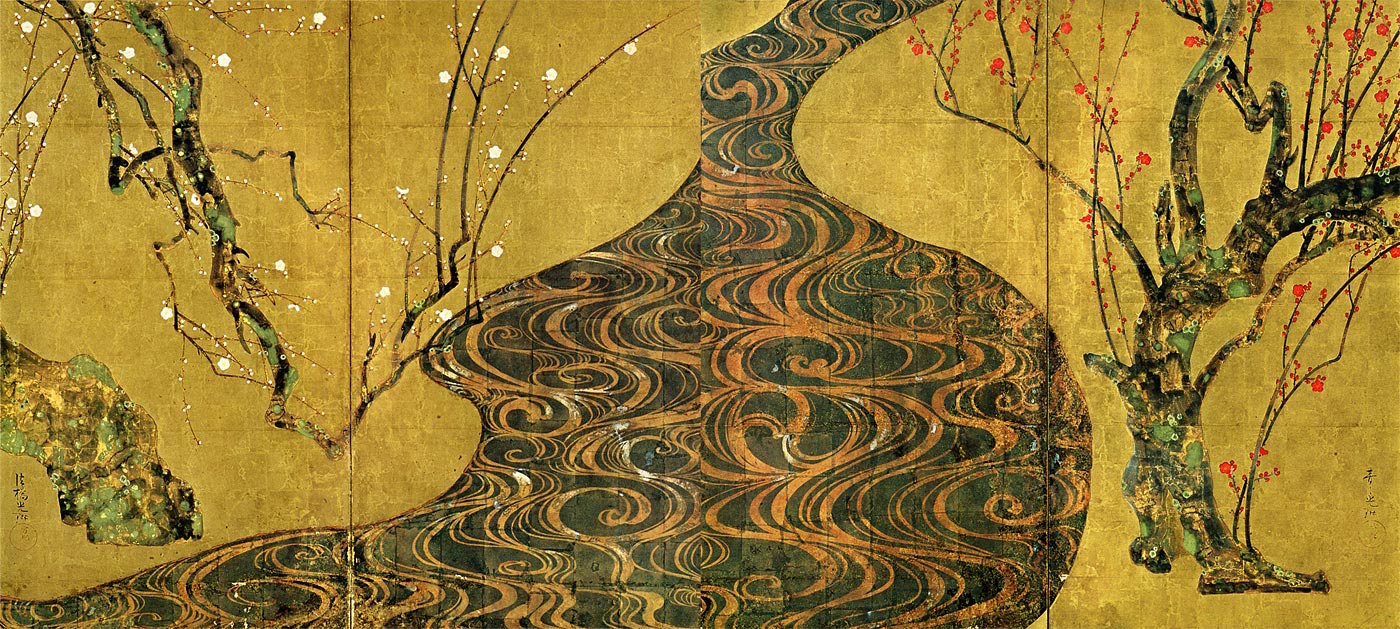
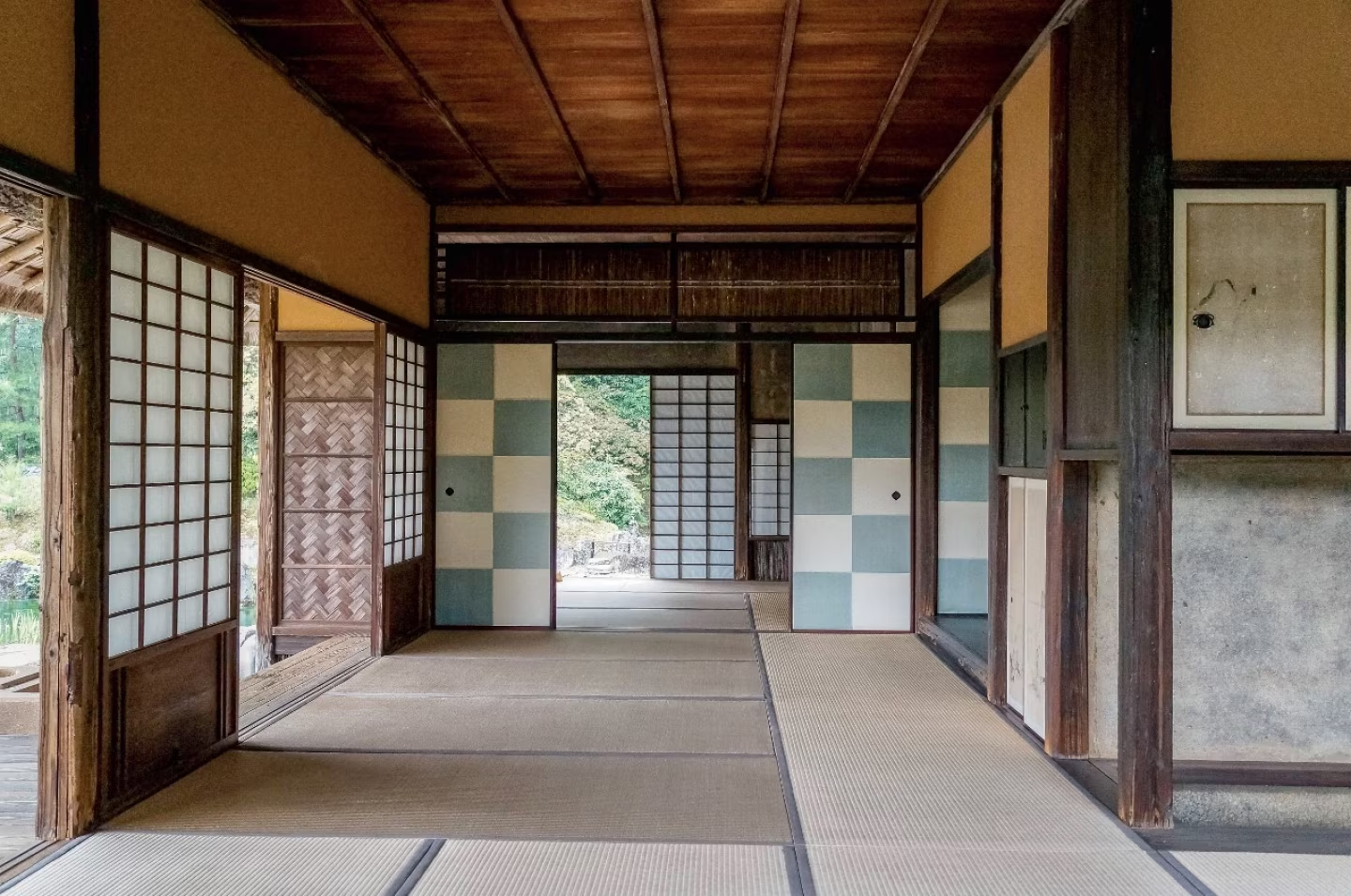
Katsushika Hokusai, Under the Wave off Kanagawa, from the series Thirty-six Views of Mount Fuji, Edo period, c. 1830-32, polychrome woodblock print, ink and color on paper, 10 x 15”
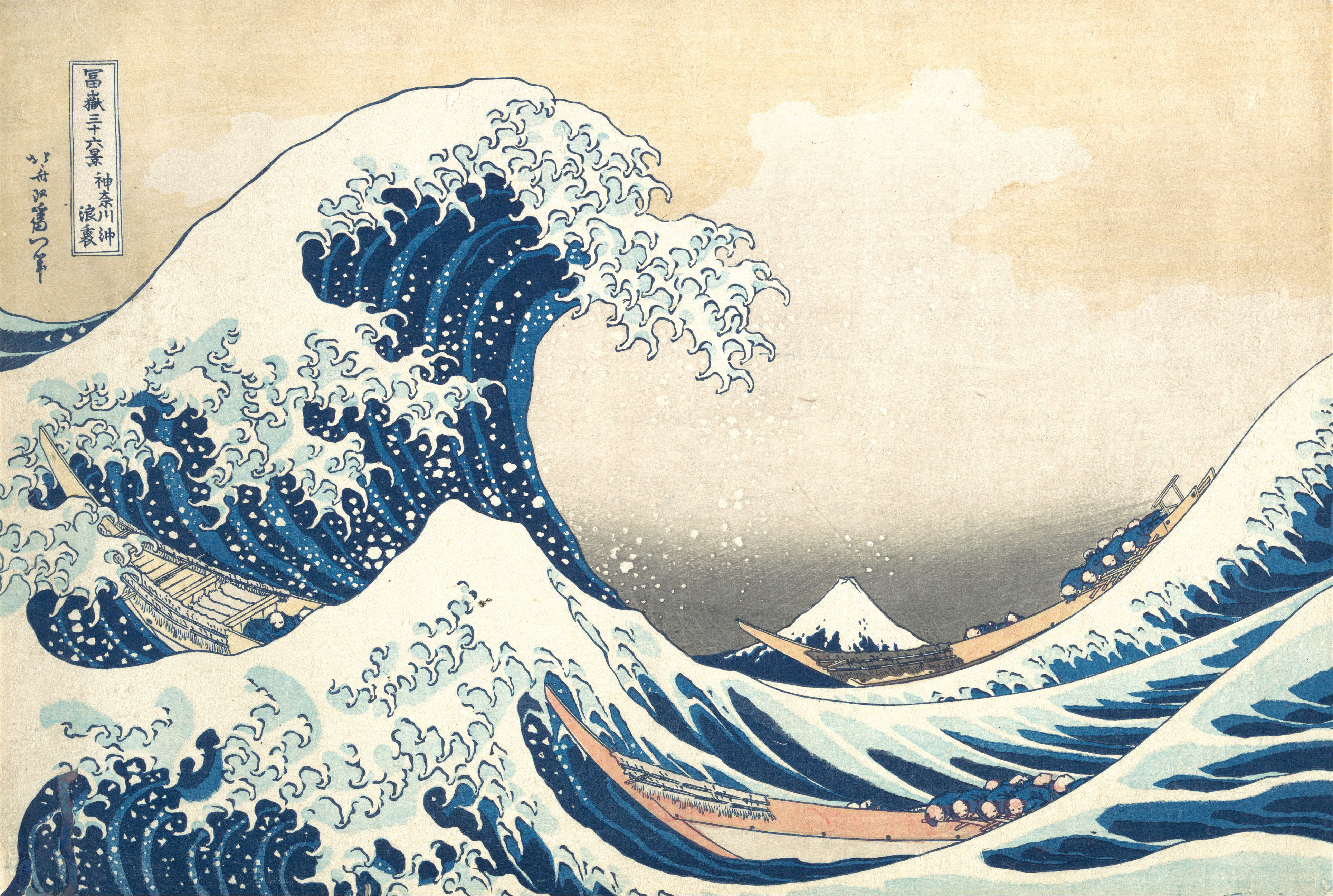
Katsushika Hokusai
